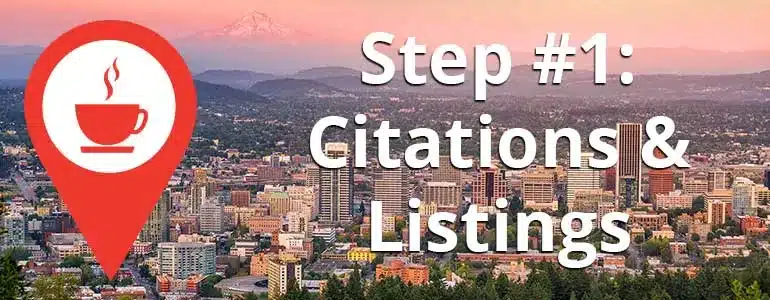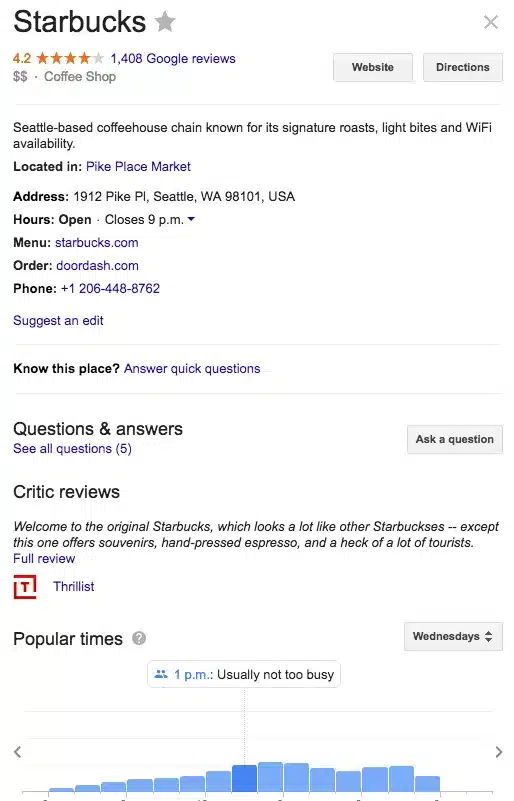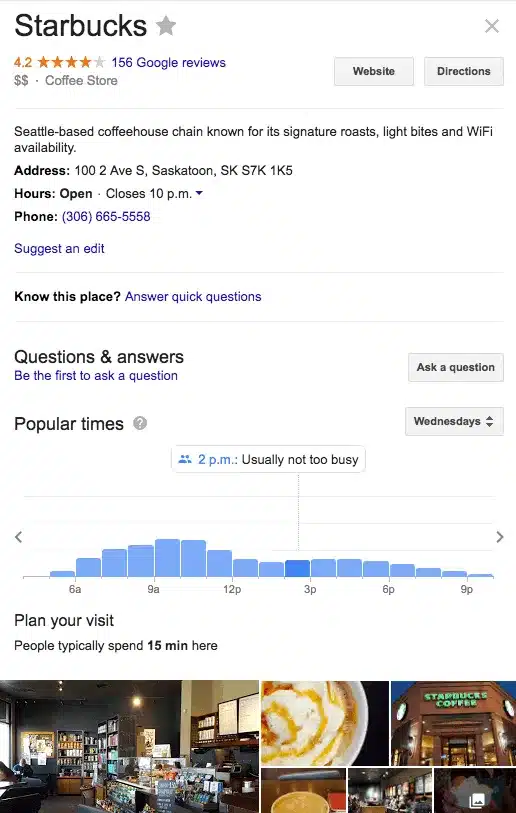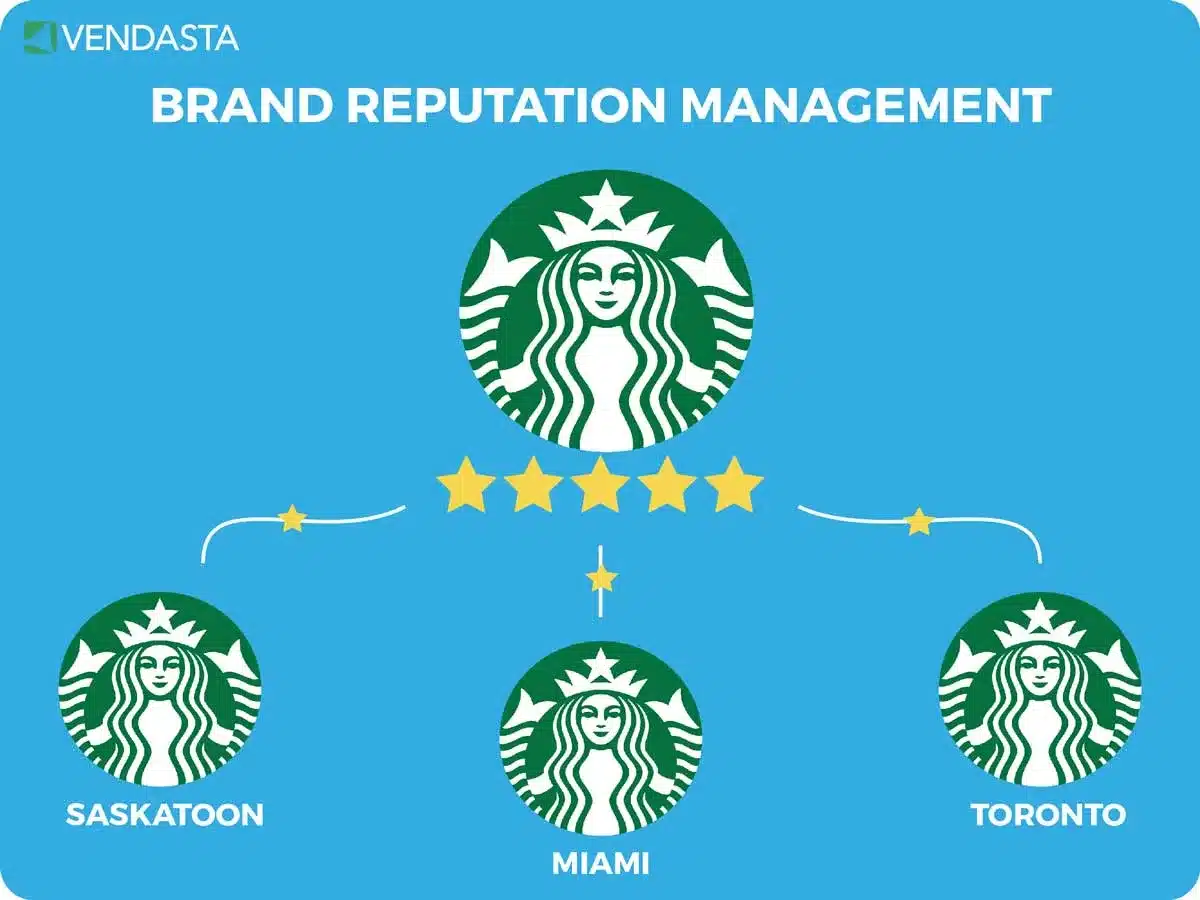How many locations does your brand have? Are they all listed correctly online? How would you even know?
When it comes to managing the online reputation of a multi-location brand, it can be a very clunky, scattered, messy business. Manually checking each listing site for every business location you own is simply not scalable, and often-times listing and online presence management systems are built for single-locations.
However, before you begin assessing your brand’s digital presence, it’s essential to understand what quality multi-location reputation management looks like.
That’s why we’ve put together this quick guide on the core aspects of a healthy and profitable online brand presence, with specific digital reputation management strategy and tactics. We’ll also discuss how you can overcome the branding, public reputation, and organization obstacles that come with managing multi-location brands online.
*Note – These steps are relevant whether you’re an emerging brand with 3 locations or an international brand with thousands of locations.
Automate the entire customer journey from first touch to repeat business
The 5-Step Approach to Multi-Location Brand Reputation Management
Step 1: Multi-Location Citation & Listings Management

One of the major factors in brand reputation management is the actual visibility of all your locations online. When it comes to the presence management of multi-location businesses, a lot of work can be involved as each location has different NAP (name, address, phone number) data and potentially even unique websites and social profiles.
Cleaning up your local citations and ensuring that each business location has correct NAP data across the web is critical, both from an SEO and customer experience perspective.
1. Audit the accuracy of location listings & citations
The first thing to check is that each unique business location has their data listed (and listed accurately) across the major listing sites. You can start managing your brand’s listings by checking the health and placement of online citations for each location.
Online citations exist in both structured and unstructured formats, and monitoring both is important for determining the overall health of a given location.
For structured citations, you’ll need to audit the business location’s individual listings across:
- Major search engines like Google, Bing, and Yahoo.
- Review sites like Google My Business, Yelp, BBB, Angie’s List,
- Social platforms like Facebook
- Online directories like Yelp, Yellowpages, Superpages, MapQuest, etc.
- Vertical-specific directories like TripAdvisor for travel, OpenTable for restaurants, Houzz for home services, etc.
- Main data aggregators: Axiom, Neustar/Localeze, Factual, and Infogroup
For unstructured citations, the process is a bit more tricky.
“An unstructured citation can be found on random websites, blogs, event listings, job posting sites, government records or social media mentions. These are unstructured because they could be as simple as a company mention. Usually, these citations don’t include a business’s NAP data.”
Creating and correcting business listing information across all these digital spaces is crucial for maintaining a healthy online presence for the entire brand.
2. Have location-specific data present for each listing
When you’re auditing your location listings and citations for accuracy, you’ll also want to add as much information and data as possible to each one. This will keep all the information on each location listing as relevant to that location as possible.
Here’s how to do it:
- Attach correct NAP data for the specific location
- Make sure the hours of operation are correct for that business
- Attach location-specific social profiles (if they exist)
- Don’t link to the main brand social profiles, unless that’s the only profile that exists
- Attach a location-specific website
- Don’t link to the main brand website (we’ll go into this further in the website section below)
- Attach photos taken at that location
- Still use the main brand logo and header image, but try and have unique photos for each location
- Attach details like brands carried, payment methods, parking information, menus, classes offered, and free wifi.
The more localized the listing, the better.


3. Create & claim individual Google My Business listings
If you want your brand, and each location within that brand, to show up prominently in local searches for your target keywords, then you’ll want to ensure that each location has its own Google My Business profile.
Start by checking for the existence of a GMB profile for each location under your brand. Sometimes, Google automatically creates a GMB profile for businesses, in which case you’ll want to ensure that the profile is properly claimed and optimized.
If Google has automatically created a GMB profile for the location, make sure it’s claimed by your business.
If Google has not automatically created a GMB profile for the location, create and claim a new one.
For each GMB page, ensure that it is filled out with the appropriate NAP data, as well as any unique photos, social profiles, websites, and other information attached to that location. Additionally, using Google Posts allows businesses to post fresh content that can appear in local searches as well as the Knowledge Panel on certain results pages.
Step 2: Multi-Location Local Reviews & Reputation Management

Another huge factor in company reputation management is the actual reputation of each location. What I mean by that is online reviews, mentions, and the overall “score” that each location of your brand has online.
Each individual business location needs to build its own strong, positive online reputation with reviews. The more positive reviews each location has, the better it looks for the brand overall, and the stronger the reputation of the brand as a whole. Furthermore, the more positive a reputation each specific location has, the more likely that location is to generate its own business from local consumers searching online for nearby solutions to their needs.

Plus, location-specific reviews and ratings allow each location to improve their own SEO, as well as the SEO for the brand as a whole.
[clickToTweet tweet=”The more positive a reputation each specific location has, the more likely that location is to generate its own business from local consumers searching online for nearby solutions to their needs. #multilocation” quote=”The more positive a reputation each specific location has, the more likely that location is to generate its own business from local consumers searching online for nearby solutions to their needs. #multilocation”]
If a location has no reviews, consider using customer feedback tools like Customer Voice to encourage customers to leave their feedback online to cultivate a stronger online reputation.
If a location has many reviews, consider rolling out a review response plan to engage with the consumers reviewing the business and continue to build a positive online reputation. Consumers are more likely to both respond and engage with a business that is obviously putting effort into their online reputation.
Either way, brands and multi-location businesses should roll out a branded reputation & review management strategy so that each location knows how to manage their own online reputation and can reply and engage with consumers within brand guidelines.
Step 3: Multi-Location Social Media

Claiming, optimizing and getting active on each individual location is key for social media marketing as well.
A recent multi-location study found that 85% of social media consumer engagements with a brand take place on local pages and only 15% on corporate pages. That’s a lot of traffic and engagement to be missing out on if you don’t have local social pages.
The rationale behind this data is pretty intuitive—people go to local pages for local solutions. They’re not interested in broad corporate messages.
For example, Facebook is making significant strides in local search, particularly in melding social media data with local search results.
We tested this out looking at Starbucks in Saskatoon, and the results we pretty bad if you own a Starbucks location in Saskatoon.

The first Starbucks location to appear in this Facebook search for ‘coffee saskatoon’ clocked in at #42 on the list. The location page isn’t claimed and as you can see, they have ‘Restaurant’ listed as the primary category. Facebook local search certainly isn’t perfect. However, it does illustrate that having unique, well optimized social profiles that encourage customer engagement is key to compete with local competitors for customers on Facebook.
What’s the answer for multi-location brands?
Develop unique social profiles and approach social marketing as a local business owner would. This means creating content centered around what customers in each specific community care about.
You can create valuable content for each location by posting:
- Behind-the-scenes looks at the staff and culture of the location
- Posts highlighting local events and community involvement
- Sharing and engaging with local consumers, highlighting reviews and regular customers
- Polls and contests for the local community
Another great way to achieve this type of best-practice corporate reputation management at scale for multiple locations would be to use a centralized platform that allows brand managers to post to each social profile for numerous locations at the same time.
This leads us to our next step, how to handle multi-location websites and landing pages…
Step 4: Multi-Location Websites & Landing Pages

A strategy for both the main branded website and location-specific websites must also be considered when optimizing and managing your brand’s reputation online. Giving each unique business location its own website or location page branching off of the main brand is a great way to improve the distinct online presence of each location and help direct consumers to the nearest store.
1. A decentralized approach
A decentralized website approach for multi-location businesses is when each location runs its own website with no guidelines, management, or brand oversight. Websites are created and run separately with their own domain, analytics, content strategy, and so on. This is a hard approach to scale and can introduce huge maintenance problems and brand inconsistency the more locations your brand owns.
It does, however, allow for easier local SEO optimization as the location is in full control of their own site and content. Ultimately though, this can dilute the overall “SEO juice” of the main brand with each location site having its own SERP rank and domain authority.
2. A centralized approach
A centralized approach for multi-location businesses is when each specific location page or “website” lives on the main brand domain. This allows that domain to build more authority and domain rank over time, keeps visual brand consistent, and maintains the analytics all in one place.
Of course, each mini location page can do its own local SEO work to appear in relevant and local searches, while all the “SEO juice” is ultimately funneled to the main brand website.
Our suggestion would be to take a centralized approach to your website and overall corporate reputation management strategy to keep your messaging consistent, and all that SEO power centralized on your brand.
Step 5: Multi-Location Local SEO Optimization

Local SEO is the thread that ties all the other factors of brand reputation together. That’s why I’ve left the SEO section for last (but it’s certainly not least)—as the local SEO process encompasses each of the above categories: listings, reputation & reviews, social media, and websites.
Each individual business location needs to have their local SEO game nailed down so that when a local consumer Googles a product/service, your brand’s nearest location appears.
The same steps reviewed in our post about how to perform a local SEO audit for clients can be applied to each business—when you think about it, each individual location under your brand could be viewed as a client!
The only difference here would be that you likely are aiming for almost the same keywords with each location, but with location-specific twists.
For example: while Starbucks would want to optimize the entire brand for “coffee,” “cafe,” and “over-priced drinks,” each location’s keywords would be more something like “best coffee in Miami,” “saskatoon cafes,” and “over-priced drinks in Toronto.”
Eagan Heath of Get Found Madison uses the following process to improve the local SEO for his multi-location clients:
- Claim and verify the Google My Business page for each location.
- Upload search engine optimized images from each of the locations to each GMB page.
- Create unique website landing pages for each location.
- Claim all Facebook Pages and Places, correcting the location information on each, and folding them under the master brand account
- Fix any incorrect information on the Big 4 web aggregators (Factual, Neustar (Localeze), Acxiom, & Infogroup) that Google and Bing supposedly pull from.
- List the business information for each location on the most important web directories for your industry.
- Encourage happy customers to leave online reviews.
- Monitor your reviews across these properties and reply to every single one, using some target SEO keywords.
Tying all these core elements of digital reputation together will help you organize and optimize all your locations, and enhance their digital presence across the board.
Related Reading: How to Perform a Local SEO Audit for Clients
Vendasta’s Multi-Location Brand Presence & Reputation Management Platform
Auditing individual listings, social profiles, websites, SEO health, plus review volume and score for each location under your brand is overwhelming to even think about, let alone execute. Doing this all manually would be excruciating and incredibly inefficient.
Brand managers need a one-stop-shop to view the overall health of their brand online with the ability to dive deep into location-specific data.
Vendasta’s platform was built with multi-location and brand reputation management in mind—giving multi-location businesses a bird’s eye view of their reputation. Our platform enables businesses with two or more locations to:
- Tap into review scores, pinpoint their best and worst performers, and understand trending themes
- Monitor social media activity to detect signs of growth or stagnation in different regions
- See how and where locations are listed on directories, review sites, and social networks
- Specify regions and customize reporting for every location
- Benchmark and identify the best and worst performing locations
Best of all, it’s scalable from 2 to 2000+ locations.

Hop on a Demo today to learn more about Vendasta’s brand management solution and get your online presence in check today.


